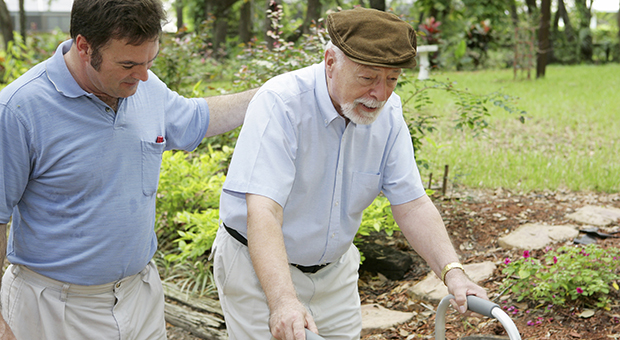The Medical Minute: Seniors often keep falls a secret

Maintaining an independent lifestyle is so important for some people as they age that they keep it a secret that they’ve experienced a fall.
The Centers for Disease Control and Prevention reports that millions of adults 65 and older suffer from falls each year. Fewer than half tell their physician.
According to Dr. Nicole Osevala, an internal medicine specialist at Penn State Hershey, these adults may be concerned that a fall signals they’re not safe living on their own anymore.
“They’re worried about other people becoming concerned about safety issues at home and the potential that they may have to move from their home to assisted living or a nursing home,” she says.
Additionally, Osevala believes that older patients do not want others to worry about them.
“If they fall and don’t have a serious injury, they don’t want to bother their kids or loved ones,” she says.
They also may want to avoid further evaluation.
Osevala advises patients and caregivers to tell their primary care physician when a fall has occurred so the reasons can be identified.
She says reasons for falls can be put into three categories:
1) What about the patient makes them at an increased risk for falling?
Osevala asks what chronic or preexisting conditions does the person have that may increase their risk of falling. Osteoarthritis and peripheral neuropathy are two conditions that Osevala says are common.
2) What medical changes may have occurred to heighten their risk?
A patient might have a few risk factors but has not yet fallen.
“Things like infections– urinary tract infections, pneumonia, skin infections — anything that might make them be not quite as strong as they would be normally can put them at increased risk,” Osevala says.
Medications may cause side effects that can affect balance. Antidepressants and antianxiety medication can be particularly problematic. Blood pressure medication can sometimes lower pressure too much.
3) Are safety hazards in the environment?
Caregivers and family members should address any dangers like throw rugs, loose cords, poor lighting and clutter on the floor.
Patients should be reminded that they should avoid icy or slick surfaces as well as uneven surfaces, and know their limitations.
“For example, they might try to climb stairs carrying a laundry basket when they normally have to hold onto the railing,” Osevala says. “It may be just a poor choice but they get half way through the task and realize that they’re in a precarious situation and they’re falling.”
Quite often, Osevala says, there is more than one reason for the fall. What contributes to a fall is different for every person.
Older adults are at an increased risk for falling because their bodies don’t react to losing balance as effectively. Muscles lose the synchronization they once had and have a much harder time recovering than in a younger person.
Regardless of the reason, one fall puts seniors at a higher risk for having another.
“It’s really important to report a fall to your doctor so they can look at all of those areas and identify anything that might be pertinent to you and try to address as many as possible,” she says.
In some cases, patients need to see a physical therapist.
Therapists can provide balance training along with the appropriate assistive device. It is not recommended that a patient use a walker or cane meant for someone else.
For more information:
http://www.cdc.gov/homeandrecreationalsafety/Falls/adultfalls.html
The Medical Minute is a weekly health news feature brought to you by Penn State Milton S. Hershey Medical Center. Articles feature the expertise of Penn State Hershey faculty physicians and staff, and are designed to offer timely, relevant health information of interest to a broad audience.
If you're having trouble accessing this content, or would like it in another format, please email Penn State Health Marketing & Communications.
